
The al-Hakim Mosque, also known as al-Anwar, is a historic mosque in Cairo, Egypt. It is named after al-Ḥākim bi-Amr Allāh (985–1021), the 6th Fatimid caliph and 16th Ismāʿīlī Imam. Construction of the mosque was originally started by Caliph al-ʿAziz, the son of al-Muʿizz and the father of al-Ḥākim, in 990 CE. It was completed in 1013 by al-Ḥākim, which is why it is named after him.

The Jāmeh Mosque of Isfahān or Jāme' Mosque of Isfahān, also known as the Atiq Mosque and the Friday Mosque of Isfahān, is a historic congregational mosque (Jāmeh) of Isfahan, Iran. The mosque is the result of continual construction, reconstruction, additions and renovations on the site from around 771 to the end of the 20th century. The Grand Bazaar of Isfahan can be found towards the southwest wing of the mosque. It has been a UNESCO World Heritage Site since 2012. It is one of the largest and most important monuments of Islamic architecture in Iran.

The Great Mosque of Tlemcen is a major historic mosque in Tlemcen, Algeria. It was founded and first built in 1082 but modified and embellished several times afterwards. It is considered one of the most important examples of architecture under the Almoravid dynasty.
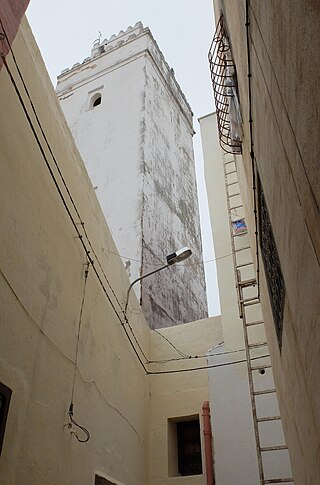
The Great Mosque of Taza is the most important religious building in the historic medina of Taza, Morocco. Founded in the 12th century, it is the oldest surviving example of Almohad architecture, although it was expanded by the Marinids in the late 13th century.

The Sinan Pasha Mosque is an early Ottoman-era mosque in Damascus, Syria, located along Suq Sinaniyya Street.
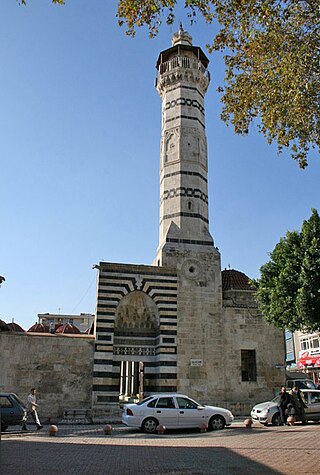
The Great Mosque of Adana, also known as the Ramazanoglu Mosque Turkish: Ramazanoğlu Camii), is a 16th-century mosque in Adana, Turkey. It forms part of a complex (külliye) that includes a madrasah and a mausoleum (türbe). The buildings are on Kızılay street, next to the Ramazanoğlu Hall.
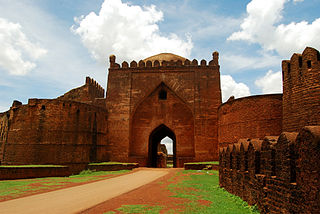
Bidar Fort is located in old city area, Bidar, Karnataka, India. The fort, the city and the district are all affixed with the name Bidar. Sultan Ahmad Shah I of the Bahmanid dynasty shifted his capital from Gulbarga to Bidar in 1427 and built his fort along with a number of Islamic monuments. There are over 30 monuments inside Bidar fort.

The Mosque of Amir Altinbugha al-Maridani, dating from 1340 CE, is a mosque from the era of the Mamluk Sultanate of Cairo, Egypt. Located south of Bab Zuweila, in the Darb al-Ahmar neighbourhood, it was built on what was then the outskirts of medieval Cairo by Amir Altinbugha al-Maridani, with significant help from Sultan al-Nasir Muhammad. The mosque has a hypostyle plan similar to the Mosque of al-Nasir, and its exterior walls are decorated in typical Mamluk architecture style. At the time of its building, it was one of the most extravagantly decorated mosques in Cairo, marked by the first fully octagonal minaret and large dome, as well as other architectural innovations. Its history and luxuriousness are directly correlated to the life and prominence of al-Maridani, as it was built with the patronage of his father-in-law, the sultan, and significant donations from al-Maridani's own fortune.

The Sultan al-Ghuri Complex or Funerary complex of Sultan al-Ghuri, also known as al-Ghuriya, is a monumental Islamic religious and funerary complex built by the Mamluk sultan Qansuh al-Ghuri between 1503 and 1505 CE. The complex consists of two major buildings facing each other on al-Mu'izz li-Din Allah street, in the Fahhamin Quarter, in the middle of the historic part of Cairo, Egypt. The eastern side of the complex includes the Sultan's mausoleum, a khanqah, a sabil, and a kuttab, while the western side of the complex is a mosque and madrasa. Today the mosque-madrasa is still open as a mosque while the khanqah-mausoleum is open to visitors as a historic site.

Toli Masjid, also known as Damri Masjid, is a mosque in Hyderabad, in the Indian state of Telangana. It was constructed during the Qutb Shahi period and completed in 1671.

The Bibi Maryam Mosque, also known as the Hajiganj Mosque, is in Hajiganj, Narayanganj. The mosque is said to have been constructed by NawabShaista Khan, Mughal subadar of Bengal. The construction of the mosque began in 1664 and finished in 1688. It took 24 years to complete. Bibi Maryam, apparently his daughter, is said to be buried nearby in a tomb. The mosque is a three-domed type, the central dome being more comprehensive than the side ones. The side domes are reduced by thickening the side walls instead of adding an intermediate half-dome, as seen in some Mughal mosques. The basal leaf decoration of the domes and the battlemented merlons speak of the standard style. The panel leaf decoration on the top of the roof is seen only on the front side. The eastern facade of the mosque has the usual three arched entrances, each opening under a half dome and the central one being more expansive than the side entrances. Two windows, one each on the south and north sides are of later innovation. The four engaged corner towers, almost merged within the wall, are extended beyond the parapet. The interior hall shows simple lateral arches. The side bays are made square by thickening the side walls. The mosque has been repaired and renovated several times. It has significantly lost much of its original features through repairs since the corner towers are being wholly modernised. A veranda on masonry pillars on the eastern side has completely overshadowed the front view. It is now being used as a Jami mosque.
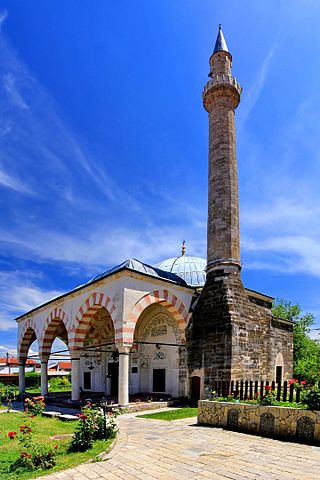
The Hadum Mosque in Gjakova, Kosovo was built in the last decade of the 16th century (1594/95) and was financed by Hadum Sylejman Efendia – Hadum Aga, which explains the name of the mosque. The mosque was built on the property of Jakë Vula and is located in the Old Bazaar. Evliya Çelebi said that around the plain of Jak Vula and Hadum Mosque were 2000 houses, some masjid and two monumental mosques, inns covered in lead, a beautiful hamam and 300 shops.

Deccani architecture, particularly the architecture of the Bahmani and Deccan Sultanates, is the architecture of the Deccan Plateau, and is a regional variant of Indo-Islamic architecture. It was influenced by the styles of the Delhi Sultanate and later Mughal architecture, but sometimes also influenced from Persia and Central Asia. Hindu temple architecture in the same areas had very different styles.
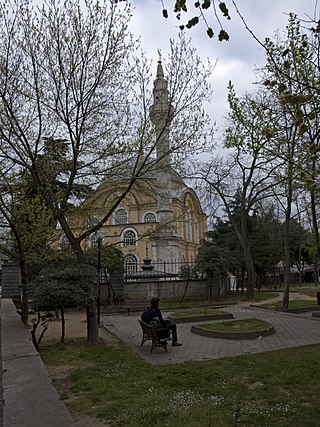
Altunizade Mosque, also known as İsmail Zühtü Pasha Mosque is a 19th-century Ottoman mosque located in Istanbul, Turkey.

The Great Mosque of Sfax was the most important mosque in the old city of Sfax, Tunisia. It was initially built towards the mid-9th century under the rule of the Aghlabid dynasty, a vassal state of the Abbasid Caliphate. The mosque was the urban and religious heart of the city and it underwent several major modifications in later periods. Architecturally, it is notable for its minaret and its unusually decorated eastern façade.
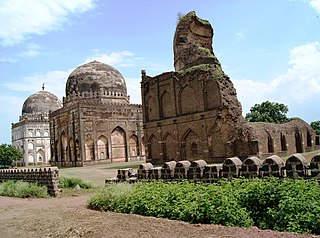
The Bahmani tombs complex at Bidar is the necropolis of the Bahmani dynasty, located in Bidar, in the Indian state of Karnataka.

The Bab Doukkala Mosque or Mosque of Bab Doukkala is a major neighbourhood mosque in Marrakesh, Morocco, dating from the 16th century. It is named after the nearby city gate, Bab Doukkala, in the western city walls. It is also known as the al-Hurra Mosque.

The Great Mosque of Fes el-Jdid is the historic main Friday mosque of Fes el-Jdid, the royal city and Marinid-era citadel of Fes, Morocco. It is believed to have been founded in 1276, around the same time that the city itself was founded, making it the oldest mosque in Fes el-Jdid.

The al-Hamra Mosque or Red Mosque is a Marinid-era mosque in Fes, Morocco. It is a local Friday mosque located on the Grande Rue of Fes el-Jdid, the palace-city founded by the Marinid rulers.

Ek Minar Mosque, or Ek Minar Masjid is a mosque located in Raichur, in the Indian state of Karnataka. It is listed as a state protected monument.




















